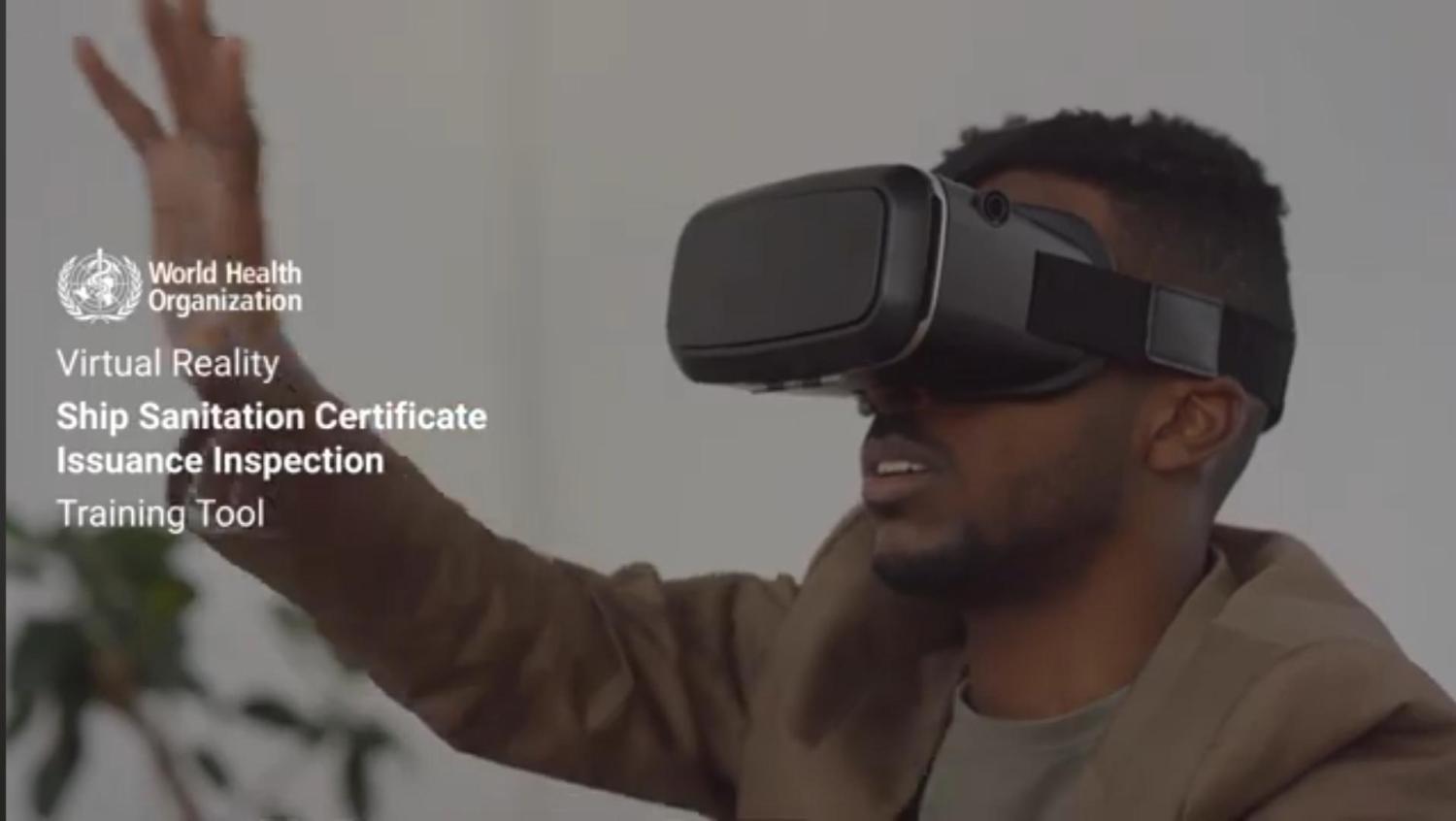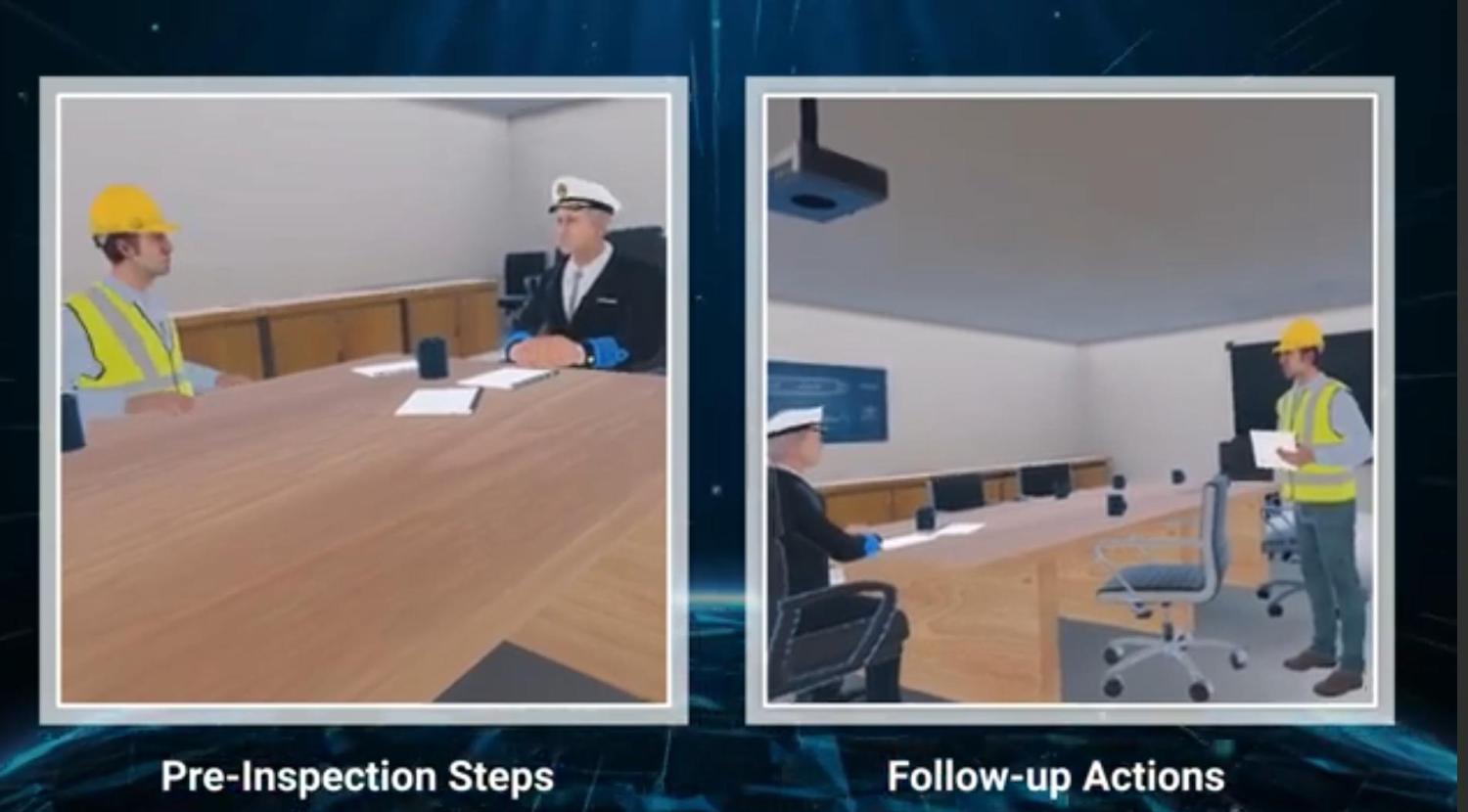A new virtual reality (VR) tool developed by WHO will significantly advance the ship sanitation inspection training process. The tool will contribute to further improvement of public health capacities at ports and on ships which are at the forefront of prevention, detection and response to public health events arising from international travel and trade.
The new VR training solution was presented for the very first time at a 4-day training for port health officers from Azerbaijan, Kazakhstan and Turkmenistan organized by WHO/Europe. When the VR tool is fully launched, it will elevate the standards of training in the field of ship sanitation inspection. The new VR-tool will benefit over 230 ports in the European Region that have the public health capacities to manage public health events. It will also be used by 41 State Parties with authorized ports to issue ship sanitation certificates. One of the key benefits of the new project will be the opportunity to train port and ship professionals remotely.

Photo: WHO
Immersive VR solution redefines possibilities
The virtual reality simulations provide the trainees with real-life experience – with the help of special headsets and hand controllers, participants can walk through a virtual reality vessel. The simulation helps them to learn how to conduct a comprehensive end-to-end sanitation inspection of the entire ship including how to undertake risk assessment work, and how to interact with a captain and the crew.
The trainees familiarize themselves with the essential steps to be taken before commencing inspections and learn through interactive animations about the necessary follow-up actions. The VR experience allows the users to inspect every area of the ship, from engine rooms, to cabins, dining areas and locker rooms. This virtual journey through the ship's corridors and decks, offering over 20 meticulously recreated visiting areas, allows trainees to feel fully present.
“The virtual tour starts at the Office of the Inspector, where we can select the personal protective equipment (PPE) to take with us on the inspection, and then we go onboard where we meet the Captain. Then we walk thought the various areas onboard the ship, from the “clean” to the “dirty” areas – for example, starting at the ship’s hospital and then going to the engine room, the cargo holds. At the end, we have a debrief with the Captain, and cover the findings,” explains Kevin Carlisle, the Technical Lead of the project.

Photo: WHO
This VR application enables Point of Entry teams to perfect their inspection skills in a risk-free environment, instilling confidence in them to operate in real-life scenarios with the required competence. Integration of haptic feedback and success indicators better enables us to measure impact.” explained Ninglan Wang, BHMG Unit Head.
“This is the first training of its kind tailored for this purpose. Currently, we have a fully operational and high-fidelity design of the project, and we hope to make it even more interactive in future versions which will have some additional functions allowing the trainees to be even more operative,” says Vibhuti Khara, Project Lead and Instructional designer of the project.
This project content is from Border Health and Mass Gatherings Country Readiness Strengthening unit and supported in design by the Learning Solutions and Training unit and Learning Delivery team WHO Academy.
